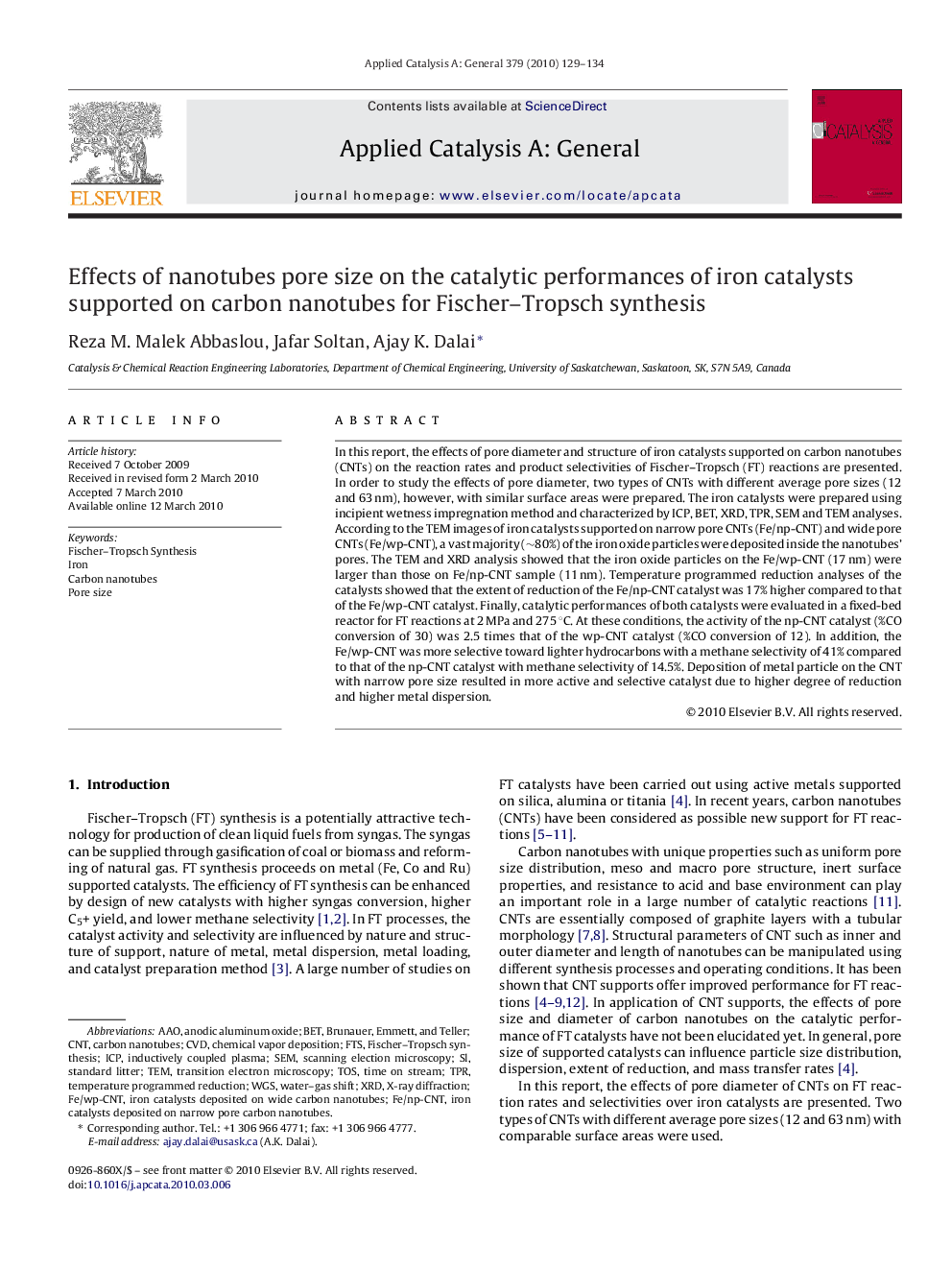| کد مقاله | کد نشریه | سال انتشار | مقاله انگلیسی | نسخه تمام متن |
|---|---|---|---|---|
| 42177 | 45913 | 2010 | 6 صفحه PDF | دانلود رایگان |

In this report, the effects of pore diameter and structure of iron catalysts supported on carbon nanotubes (CNTs) on the reaction rates and product selectivities of Fischer–Tropsch (FT) reactions are presented. In order to study the effects of pore diameter, two types of CNTs with different average pore sizes (12 and 63 nm), however, with similar surface areas were prepared. The iron catalysts were prepared using incipient wetness impregnation method and characterized by ICP, BET, XRD, TPR, SEM and TEM analyses. According to the TEM images of iron catalysts supported on narrow pore CNTs (Fe/np-CNT) and wide pore CNTs (Fe/wp-CNT), a vast majority (∼80%) of the iron oxide particles were deposited inside the nanotubes’ pores. The TEM and XRD analysis showed that the iron oxide particles on the Fe/wp-CNT (17 nm) were larger than those on Fe/np-CNT sample (11 nm). Temperature programmed reduction analyses of the catalysts showed that the extent of reduction of the Fe/np-CNT catalyst was 17% higher compared to that of the Fe/wp-CNT catalyst. Finally, catalytic performances of both catalysts were evaluated in a fixed-bed reactor for FT reactions at 2 MPa and 275 °C. At these conditions, the activity of the np-CNT catalyst (%CO conversion of 30) was 2.5 times that of the wp-CNT catalyst (%CO conversion of 12). In addition, the Fe/wp-CNT was more selective toward lighter hydrocarbons with a methane selectivity of 41% compared to that of the np-CNT catalyst with methane selectivity of 14.5%. Deposition of metal particle on the CNT with narrow pore size resulted in more active and selective catalyst due to higher degree of reduction and higher metal dispersion.
In this report, the effects of pore diameter and structure of iron catalysts supported on carbon nanotubes (CNTs) on the reaction rates and product selectivities of Fischer–Tropsch (FT) reactions are presented. In order to study the effects of pore diameter, two types of CNTs with different average pore sizes (12 and 63 nm), however, with similar surface areas were prepared. Deposition of metal particles on the CNT with narrow pore size resulted in more active and selective catalyst due to higher degree of reduction and higher metal dispersion.Figure optionsDownload high-quality image (133 K)Download as PowerPoint slide
Journal: Applied Catalysis A: General - Volume 379, Issues 1–2, 15 May 2010, Pages 129–134